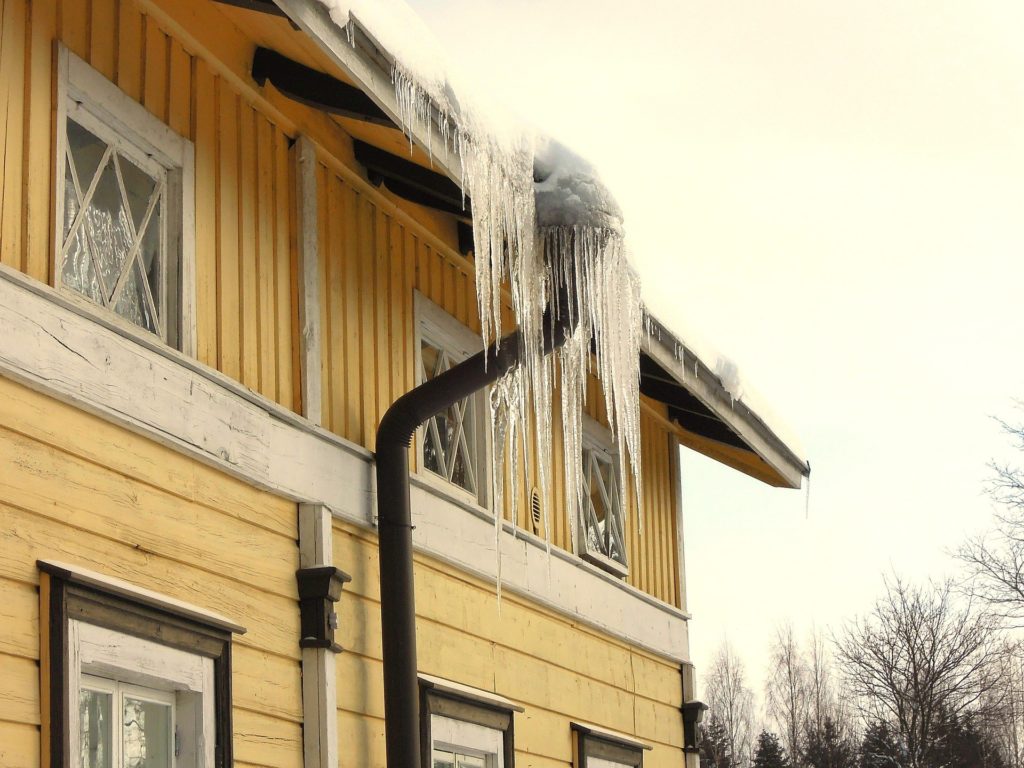Winterize Your Home with These Important Projects

Photo via Pixabay by Anneileino
It’s really easy to enjoy summer, cruise into autumn, and forget to prepare for the coming winter. Preparing your home with some winterization projects can help you avoid damage and save money on heating costs.
Inspect the Exterior of Your Home
A good place to start winterizing is by checking your roof. Make sure it is in good condition and the gutters are clean. Clogged gutters can cause problems like ice dams when it snows. Melting snow will not drain off your roof properly when leaves and debris block the gutters, and can refreeze there causing a buildup of snow and water on the roof. This can lead to water leaking through cracks and making them bigger.
Check the exterior of your home for structural issues or other problems that could be exacerbated by winter storms. Rotting trees or limbs could come down with the weight of snow or ice and should be removed to prevent damage to your family, home, or cars. Unhook water hoses and turn off spigots to prevent freezing water inside from expanding and causing problems.
Think about the walkways, steps, and driveways you and your family will be using. Make sure they are safe and stock up on some sand or de-icing agents to have available as soon as bad weather hits.
Tips for Inside Your Home
Insulation is important for energy efficiency. Make sure your walls, attic floors, and basement ceilings are insulated well. It will cut heating costs and keep your family warm.
Another quick fix is checking your ceiling fans to make sure they are set in reverse for the winter. There will be a switch on the fan to make it rotate clockwise, which will pull warm air downward away from the ceiling and keep rooms warmer while saving money.
Replace or clean furnace filters monthly. They tend to collect more dust and dirt when the heat is running more. Dirty filters can restrict airflow and increase energy usage, which runs up your heating bill.
Purchase pre-slit pipe foam to insulate your water pipes. You can get it from a hardware store and easily install it to cut back on water heating costs and avoid freezing or bursting pipes during cold weather.
Flush out your water heater to get rid of any sediment that might impede it from running at full potential. Also remember to check the temperature that your water heater is set at. The default temperature is usually 140 degrees fahrenheit, but you can set it to 120 degrees so that the heater will not work so hard, and save on water heating costs during the cold months.
Installing storm windows and doors are your best bet for winter months, but window insulation kits work well also. You can purchase these kits at hardware stores and easily use them. These can be a great buffer against the cold while keeping your warm air inside.
Check around your home for other draft points. Holes and gaps near window and door frames, near fireplaces, or any place different building materials come together could be letting warm air out or cold air in. Use caulk, spray foam, or weather stripping to fill these gaps and save energy costs.
Winterizing will prepare your home for the cold months and keep your family safe and warm, while saving your wallet in the long run.
-Guest post by Bradley Davis for Disasterweb.net

No comments yet.